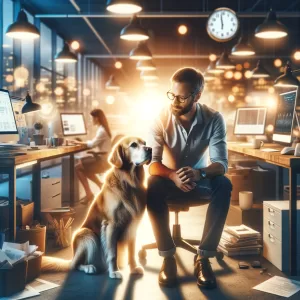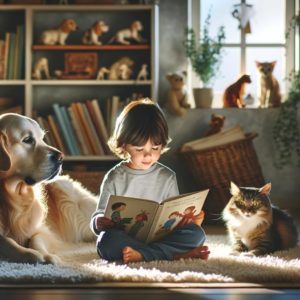Pets have a unique ability to capture our hearts and become cherished members of our families. But have you ever wondered how this special bond between humans and animals has evolved over time and across cultures? Join us as we embark on a fascinating journey through the annals of history, exploring how pet ownership has transformed and diversified in various civilizations.
In ancient Egypt, cats were revered and admired for their graceful beauty and hunting prowess. They were considered sacred and protected by the goddess Bastet, who was often depicted as a lioness or a woman with a lion’s head. Egyptians adored their feline companions so much that they would shave off their eyebrows in mourning when their cats passed away.
Fast forward to ancient Rome, and we discover that dogs were highly valued for their protective instincts and loyal nature. They were often used as guards and hunting companions, with breeds such as the Molossus earning fame for their size and strength. Romans even had a saying, “Cave Canem” or “Beware of the Dog,” which was a testament to their respect for canine abilities.
In medieval Europe, the concept of pet ownership began to take on a new dimension, as pets became status symbols for the wealthy and noble. Lapdogs, such as the Maltese, became popular among the upper classes, offering comfort and companionship to their owners. These pampered pooches were adorned with luxurious collars and often portrayed in paintings and tapestries alongside their aristocratic human friends.
The exploration of the New World brought about an exchange of pet species between the Old and New World, which greatly impacted pet ownership practices. Birds, such as parrots and macaws, were introduced to European households, where they became prized for their exotic beauty and ability to mimic human speech. This fascination with exotic pets extended to other animals, such as monkeys and even lions, although these more dangerous creatures were typically reserved for royalty and nobility.
In more recent centuries, pet ownership has become increasingly accessible to people of all social classes. The Victorian era saw a boom in pet ownership, as the middle class embraced the idea of pets as cherished family members. The rise of dog shows and pedigree breeding further popularized pet ownership, leading to the development of many modern breeds we know and love today.
Fast forward to the 21st century, and we find pet ownership flourishing in countless cultures around the world. Pets are cherished for their companionship, emotional support, and the joy they bring to our lives. As we look to the future, it’s evident that the bond between humans and animals will continue to evolve and deepen, as we learn to appreciate and care for our furry friends in new and innovative ways.
So, raise a paw or a tail in honor of the remarkable history of pet ownership across cultures and throughout time. It’s a journey that has shaped our lives, our communities, and our hearts in countless ways, and one that will undoubtedly continue to do so for generations to come.








